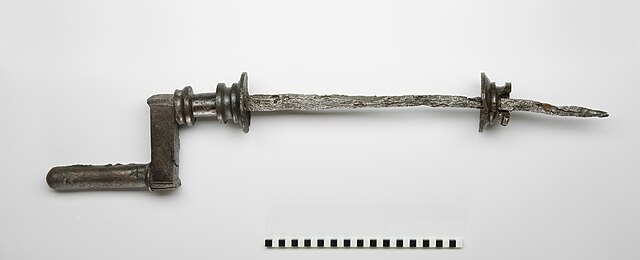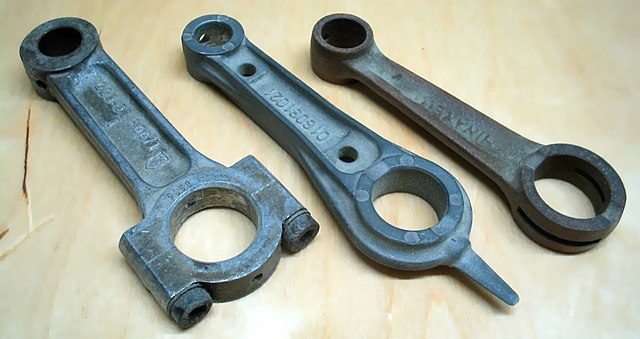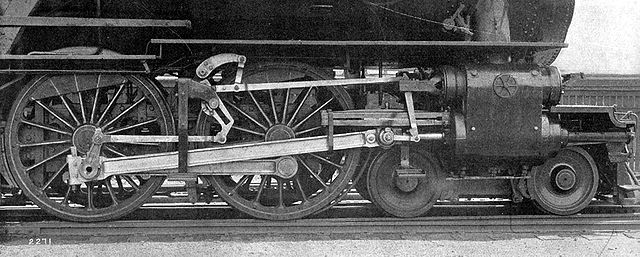A crank is an arm attached at a right angle to a rotating shaft by which circular motion is imparted to or received from the shaft. When combined with a connecting rod, it can be used to convert circular motion into reciprocating motion, or vice versa. The arm may be a bent portion of the shaft, or a separate arm or disk attached to it. Attached to the end of the crank by a pivot is a rod, usually called a connecting rod (conrod).
A compound crank
Hand crank on a pencil sharpener
Tibetan operating a quern (1938). The upright handle of such rotary handmills, set at a distance from the centre of rotation, works as a crank.
Roman crank handle from Augusta Raurica, dated to the 2nd century AD
A connecting rod, also called a 'con rod', is the part of a piston engine which connects the piston to the crankshaft. Together with the crank, the connecting rod converts the reciprocating motion of the piston into the rotation of the crankshaft. The connecting rod is required to transmit the compressive and tensile forces from the piston. In its most common form, in an internal combustion engine, it allows pivoting on the piston end and rotation on the shaft end.
Typical design of automobile engine connecting rod
Typical aluminium rod (left), oil drip rod (centre), steel rod (right)
Beam engine with twin connecting rods (almost vertical) between the horizontal beam and the flywheel
Steam locomotive connecting rod (between the piston and the rear wheel; the largest rod visible)








